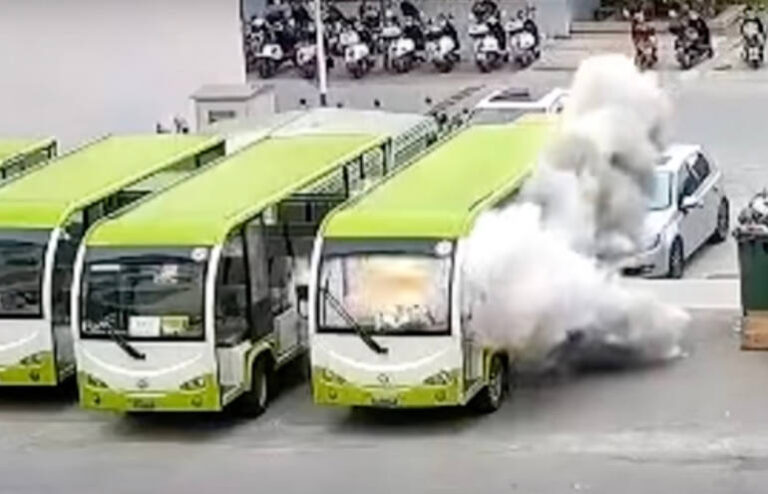Five parked cars were destroyed in a blaze at Sydney airport this month, which appears to have originated in the battery of an EV. Investigations are ongoing, but Superintendent Adam Dewberry from Fire and Rescue NSW noted that the battery had been removed from a damaged vehicle before the fire started.
“If lithium batteries do suffer mechanical damage or a knock they are susceptible to ignite,” he said. “Our advice to anyone with an electric vehicle that has a knock or is not operating the way it should is to get it into a dealership and have the technicians look at it.”
But he stressed that vehicle batteries were much lower risk than e-scooters or bikes.
No doubt this incident will be a cause for concern for anyone looking at transitioning a private vehicle or fleet of vehicles to electric, so let’s take a thorough look at fire safety and EV.
Much of the misinformation floating about EVs is focused on their susceptibility to fire, so let’s get the record straight on this. Recent data from the Swedish Civil Contingencies Agency (MSB) has shown that EVs are 20 times less likely to catch fire than petrol and diesel cars. However, if Lithium Ion batteries (LIB) do catch fire, whether through internal ignition or due to external sources, the fire spreading through the battery in a process called thermal runaway can behave very differently to other types of fire, and needs to be managed in different ways.
As may be the case in the Sydney airport EV fire, battery ignition can happen long after an incident.
How are EV fires different?
Lithium Ion batteries, whether in power tools, scooters or electric vehicles have a large amount of energy in a very small space. Simply put, when a battery short circuits, usually due to damage, heat or overcharging, it produces a heat and chemical reaction that increases the damage, creating more heat and chemical reactions, spreading the damage. Vented gases, which can look like smoke, are instead toxic droplets that are extremely hazardous. LIB fires burn hotter than many types of fire, potentially causing greater damage. And because LIB fires are self sustaining, they are not easily smothered. LIB fires also run the risk of spontaneous re-ignition up to months later.
With constantly improving battery management systems, EV fire risk is decreasing, and with careful management Fleet Managers can increase the safety of their assets.
How to avoid EV fires in your fleet
The most important step fleet managers can do is to maintain regular maintenance and servicing schedules, and act immediately if vehicle warning lights are on, or if an EV suffers impact.
As may be the case in the Sydney airport EV fire, battery ignition can happen long after an incident, so an accidented vehicle should be seen to immediately, and not allowed to sit amongst other cars.
Install charging infrastructure outdoors or close to exits where possible, as to date EV fires have occurred while vehicles are plugged in to chargers. They are not necessarily charging, but are often still parked at chargers. When installing infrastructure refer to your fire safety consultants, as each state has different rules regarding EV charging.
Ensure charging infrastructure is compliant, and has AC isolator switches and emergency stop buttons as part of the installation.
When adding EV to the fleet, and installing charging infrastructure, be sure to update fire safety plans and staff fire safety training, stressing evacuation and distancing from vehicles venting gases or making unusual sounds.
EVfiresafe.com is a great Australian resource for more information on EV fires and fire safety.
As a final point it is worth noting the higher concern of e-scooter or e-bikes for LIB fires. As they are not subject to as stringent regulation as vehicles, and often do not have battery management systems, micro mobility devices are a fire hazard to buildings, particularly when attached to charging. It is worth building managers considering where e-bikes and e-scooters are parked and charging on premises.





